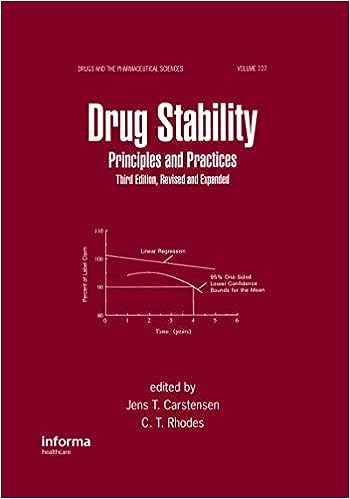Advancements in stability testing methodologies are essential for ensuring the quality, safety, and efficacy of pharmaceutical products throughout their shelf life. Innovative approaches and technologies enhance the efficiency, accuracy, and reliability of stability testing, enabling pharmaceutical companies to meet regulatory requirements and deliver high-quality medicines to patients.
Key Advances
Several key advances have transformed stability testing methodologies:
- Real-Time Monitoring: Adoption of real-time monitoring techniques, such as wireless sensors, microchips, and smart packaging, enables continuous assessment of product stability in real-world storage conditions, providing valuable insights into degradation kinetics and shelf-life.
- High-Throughput Screening (HTS): Implementation of HTS platforms and automation technologies facilitates rapid screening of
Technological Innovations
Technological innovations driving advancements in stability testing methodologies include:
- Advanced Instrumentation: Development of high-throughput analytical instruments, automated sample handling systems, and miniaturized sensors enhances the efficiency and throughput of stability testing, reducing time and resource requirements.
- Smart Packaging Solutions: Integration of smart packaging technologies, such as intelligent labels, RFID tags, and environmental sensors, enables real-time monitoring of product storage conditions and quality degradation, enhancing supply chain visibility and product safety.
- Cloud-Based Data Analytics: Adoption of cloud-based data analytics platforms and big data analytics tools allows for efficient storage, processing, and analysis of large datasets from stability testing, enabling rapid decision-making and knowledge discovery.
- Advanced Data Visualization: Development of advanced data visualization tools and interactive dashboards improves the visualization and interpretation of stability data, facilitating communication, collaboration, and decision-making among stakeholders.
Future Directions
The future of stability testing methodologies will likely involve continued innovation and integration of advanced technologies, automation, and data-driven approaches to enhance efficiency, reliability, and regulatory compliance. As pharmaceutical development evolves, stability testing will remain a critical aspect of ensuring the quality, safety, and efficacy of medicines.
Conclusion
Advances in stability testing methodologies are driving transformation in pharmaceutical development and manufacturing, enabling pharmaceutical companies to optimize product stability, accelerate regulatory approval, and deliver high-quality medicines to patients worldwide. By embracing innovation and leveraging cutting-edge technologies, stakeholders can address current challenges and anticipate future needs in stability testing.
